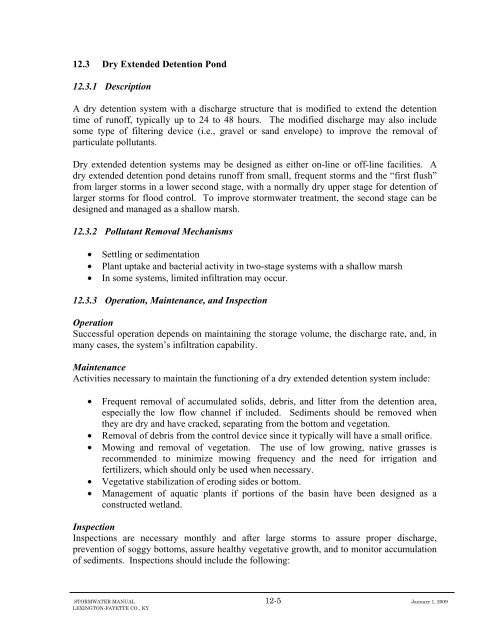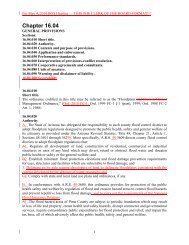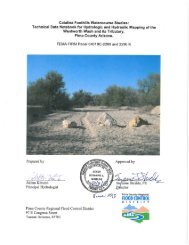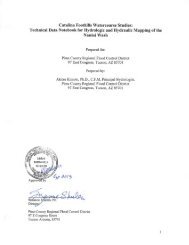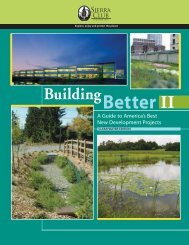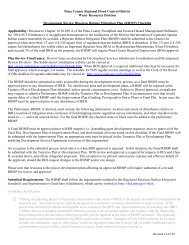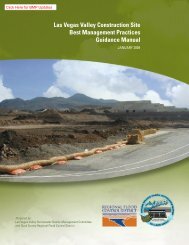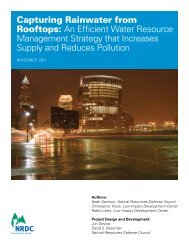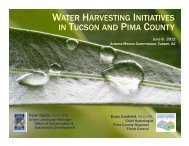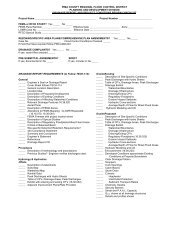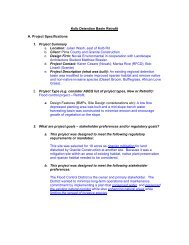Stormwater Manual - Pima County Flood Control District
Stormwater Manual - Pima County Flood Control District
Stormwater Manual - Pima County Flood Control District
You also want an ePaper? Increase the reach of your titles
YUMPU automatically turns print PDFs into web optimized ePapers that Google loves.
12.3 Dry Extended Detention Pond<br />
12.3.1 Description<br />
A dry detention system with a discharge structure that is modified to extend the detention<br />
time of runoff, typically up to 24 to 48 hours. The modified discharge may also include<br />
some type of filtering device (i.e., gravel or sand envelope) to improve the removal of<br />
particulate pollutants.<br />
Dry extended detention systems may be designed as either on-line or off-line facilities. A<br />
dry extended detention pond detains runoff from small, frequent storms and the “first flush”<br />
from larger storms in a lower second stage, with a normally dry upper stage for detention of<br />
larger storms for flood control. To improve stormwater treatment, the second stage can be<br />
designed and managed as a shallow marsh.<br />
12.3.2 Pollutant Removal Mechanisms<br />
• Settling or sedimentation<br />
• Plant uptake and bacterial activity in two-stage systems with a shallow marsh<br />
• In some systems, limited infiltration may occur.<br />
12.3.3 Operation, Maintenance, and Inspection<br />
Operation<br />
Successful operation depends on maintaining the storage volume, the discharge rate, and, in<br />
many cases, the system’s infiltration capability.<br />
Maintenance<br />
Activities necessary to maintain the functioning of a dry extended detention system include:<br />
• Frequent removal of accumulated solids, debris, and litter from the detention area,<br />
especially the low flow channel if included. Sediments should be removed when<br />
they are dry and have cracked, separating from the bottom and vegetation.<br />
• Removal of debris from the control device since it typically will have a small orifice.<br />
• Mowing and removal of vegetation. The use of low growing, native grasses is<br />
recommended to minimize mowing frequency and the need for irrigation and<br />
fertilizers, which should only be used when necessary.<br />
• Vegetative stabilization of eroding sides or bottom.<br />
• Management of aquatic plants if portions of the basin have been designed as a<br />
constructed wetland.<br />
Inspection<br />
Inspections are necessary monthly and after large storms to assure proper discharge,<br />
prevention of soggy bottoms, assure healthy vegetative growth, and to monitor accumulation<br />
of sediments. Inspections should include the following:<br />
STORMWATER MANUAL 12-5 January 1, 2009<br />
LEXINGTON-FAYETTE CO., KY


